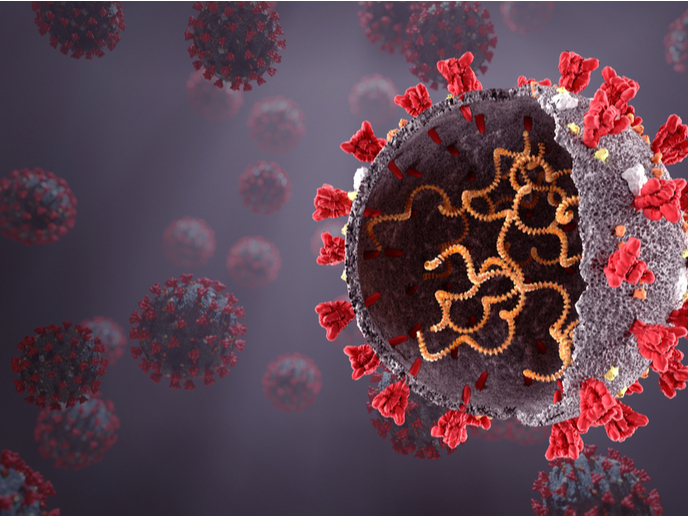A clearer picture of coronavirus infection process for better future treatments
The 3.5 million deaths worldwide caused by the COVID-19 pandemic highlight the need for better therapies. However, how can more effective drugs be developed without an in-depth understanding of exactly what happens when the SARS-CoV-2 virus infects a host cell? To address this need, scientists from Germany and Switzerland set out to paint a more complete picture of the virus’ infection process. The researchers investigated the molecular functions and interactions of the viral proteins using state-of-the-art proteomics, the large-scale study of all the proteins expressed by a cell, tissue or organism. With support from the EU-funded ProDAP project, they were able to document the interaction of the closely related SARS-CoV and SARS-CoV-2 coronaviruses with a cell at five different proteomics levels. The research results have been published in the journal ‘Nature’. Led by Prof. Andreas Pichlmair of ProDAP project host Technical University of Munich and Prof. Matthias Mann of Germany’s Max-Planck Institute of Biochemistry, the research team profiled the interactomes of SARS-CoV and SARS-CoV-2. They then went on to record how these molecular interactions affect the transcriptome, proteome, phosphoproteome and ubiquitinome of human lung cells.
Studying viral and host protein interactions
When a virus infects a host cell, the proteins on the surface of the virus bind to specific receptor proteins on the human cell’s surface. Aided by advanced mass spectrometry techniques and bioinformatic analysis, the scientists created an extensive data set that provides information on the cellular proteins that the viral proteins bind to, as well how these interactions affect the host cell. According to a ‘EurekAlert!’ news release, they discovered a total of 1 484 interactions between viral proteins and human cellular proteins. “Had we only looked at proteins, however, we would have missed out on important information,” observed Prof. Pichlmair in the same news release. “A database that only includes the proteome would be like a map containing just the place names but no roads or rivers. If you knew about the connections between the points on that map, you could gain much more useful information,” he went on to explain. The research led to greater insight into how SARS-CoV-2 affects different functions. For example, autophagy, the body’s way to get rid of damaged parts of a cell, was found to be specifically dysregulated by SARS-CoV-2 protein ORF3. The pathway of transforming growth factor beta, or TGF-β, a protein that plays a critical role in regulating many cellular processes, was specifically dysregulated by ORF8, another SARS-CoV-2 protein. “There has been no comparable mapping for SARS-CoV-2 so far,” stated Prof. Mann.
Next steps
The scientists are currently investigating new drug candidates for COVID-19 that they’ve identified through their analyses. Prof. Pichlmair noted: “We are also developing a scoring system for automated identification of hotspots. I am convinced that detailed data sets and advanced analysis methods will enable us to develop effective drugs in a more targeted manner in the future and limit side effects in advance.” The 5-year ProDAP (Protein Dynamics in Antiviral Processes) project ends in March 2024. For more information, please see: ProDAP project
Keywords
ProDAP, COVID-19, coronavirus, SARS-CoV, protein, cell



